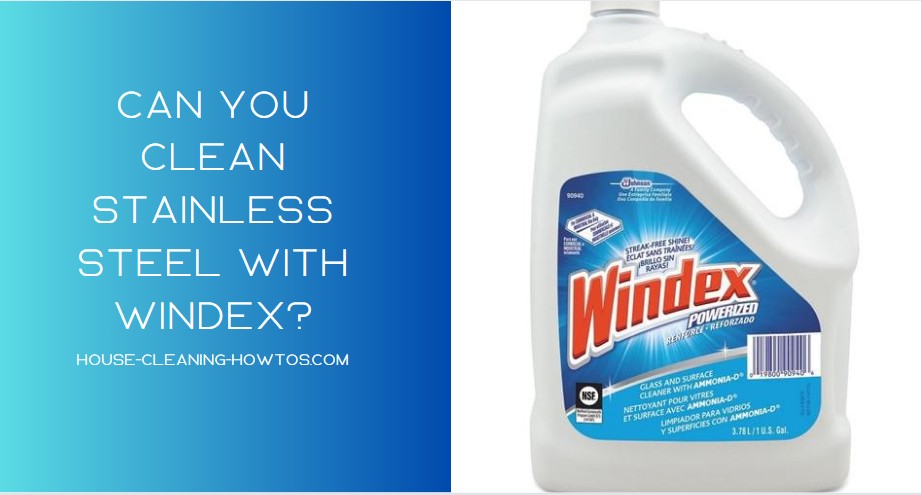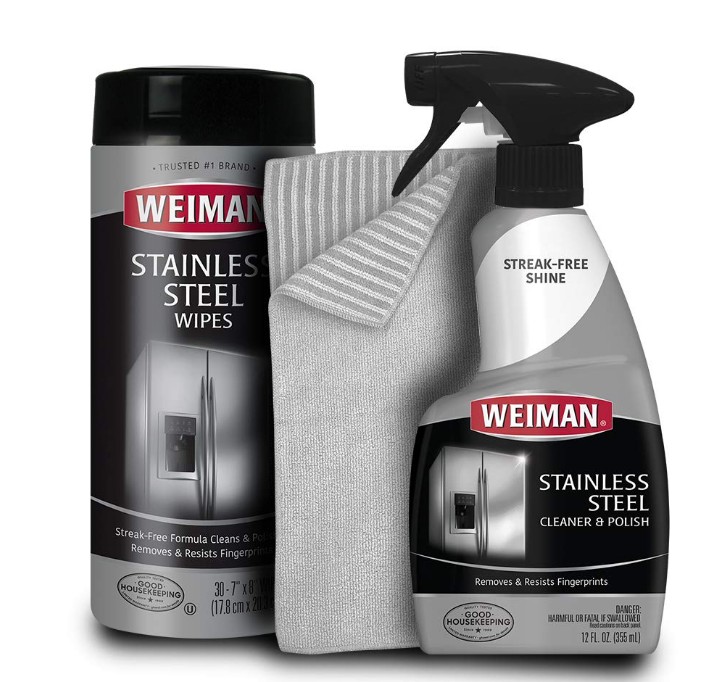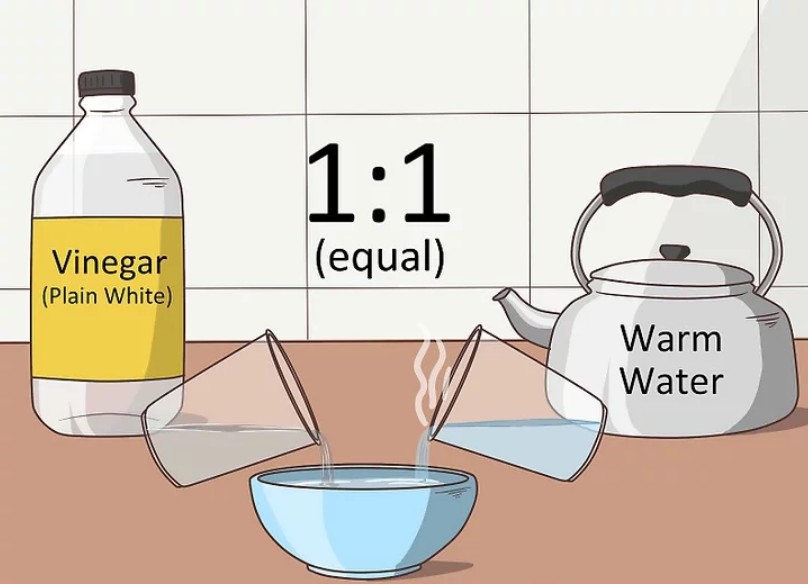Stainless steel appliances are a beautiful addition to any home, but keeping them spotless? That can feel like a full-time job. Fingerprints (shoutout to my parents out there), smudges, and streaks seem to appear the moment you finish cleaning. If you’ve ever wondered, “Can I just use Windex to make this easier?” you’re not alone.
The good news is, yes, you can clean stainless steel with Windex—but there are a few tricks to doing it the right way. In this guide, we’ll explore when and how to use Windex on your stainless steel appliances, plus a few other tips to keep them gleaming without the hassle.

What Makes Stainless Steel Tricky to Clean?
Stainless steel is loved for its sleek, modern look, but it has one big downside—it shows everything. Fingerprints, water spots, and smudges can quickly take away from that polished appearance. So, why is stainless steel so hard to keep clean?
The surface of stainless steel is made up of tiny grooves or grains. These grains are great for durability, but they also trap dirt and oils, making smudges stand out. Plus, if you clean against the grain or use the wrong products, you can leave behind streaks or even scratches.
That’s why using the right tools and techniques is so important. The wrong cleaner or method can make the mess worse, while the right approach can bring back that showroom shine. Now that you know what you’re up against, let’s see how Windex fits into the picture!
So Can You Use Windex on Stainless Steel?
Yes, you can clean stainless steel with Windex—but it’s all about how you use it. Windex works well for removing fingerprints, smudges, and light grime, thanks to its streak-free formula. It’s especially effective on shiny stainless steel surfaces where fingerprints tend to stand out.
However, there are a few things to keep in mind. Windex is safe for most stainless steel, but if you have a brushed finish, you might notice streaks if it’s not applied properly. Also, avoid using too much—less is more when it comes to Windex. Over-spraying can leave a residue that dulls the shine.
While Windex is a convenient option, it’s not the only one. If you notice streaking or aren’t getting the results you want, there are other methods that might work better for your specific appliance. Let’s dive into how to use Windex safely for the best results.
How to Use Windex on Stainless Steel Safely
To get the most out of Windex, follow these simple steps:
- Spray on a Cloth, Not the Surface: Instead of spraying Windex directly on your stainless steel, spray it onto a microfiber cloth. This helps avoid over-saturation and reduces streaks.
- Wipe in the Direction of the Grain: Look closely at your stainless steel—you’ll notice tiny lines or “grain.” Always wipe in the direction of the grain for a smoother finish and to prevent smudging.
- Buff with a Dry Cloth: After wiping, use a clean, dry microfiber cloth to buff the surface. This removes any remaining residue and gives your stainless steel that polished, streak-free look.
Using these steps will make Windex a reliable cleaning tool for your stainless steel appliances. But if it’s not quite cutting it, don’t worry—there are other options to try.
We would still recommend doing the cleanup with the products intended precisely for stainless steel surfaces. The efficiency of such products is secured by their targeted action, and their ingredients are always gentle and don’t contain aggressive substances that can harm stainless steel appliances.
Alternatives to Windex
If Windex isn’t giving you the results you want or if you prefer something more natural, there are plenty of alternatives:
- White Vinegar and Water: Mix equal parts vinegar and water in a spray bottle. Spray onto a cloth and wipe in the direction of the grain. It’s natural, affordable, and great for cutting through grease.
- Dish Soap and Warm Water: Add a few drops of dish soap to warm water. Use a soft cloth to clean the surface, then rinse with a damp cloth and dry.
- Commercial Stainless Steel Cleaners: These are specially designed for stainless steel and can provide a long-lasting shine. Follow the instructions on the label for best results.
Each method has its benefits. For heavy-duty cleaning, a commercial cleaner might be best. For eco-friendly and budget-conscious cleaning, vinegar is hard to beat. Experiment with what works best for your appliances!
We also like the wipes, like Weiman Stainless Steel Wipes. They are really convenient. No need for soft cloth here. They are absolutely self-sufficient.

DIY cleaners
If, for some reason, the above special products are not an option for you, we are offering traditional and effective homemade stainless steel cleaning methods.
Vinegar. This household darling well-renowned for its exceptional cleaning quality can be applied as a stainless steel care means. 2 methods can serve your purpose.
The first one implies a vinegar and warm water solution (1:1 ratio) applied to the surface, rubbed in, rinsed, and wiped with a microfiber cloth.

Smudge-Free Stainless Steel Made Easy
So, can you clean stainless steel with Windex? Absolutely! It’s a convenient and effective way to remove fingerprints and smudges when used properly. Just remember to spray onto a cloth, wipe with the grain, and buff for a streak-free shine.
If Windex isn’t your go-to, alternatives like vinegar or stainless steel cleaners work just as well. With a little care and regular maintenance, your stainless steel appliances can stay spotless and beautiful for years to come.
Have a favorite stainless steel cleaning trick? Share it in the comments—we’d love to hear from you!

